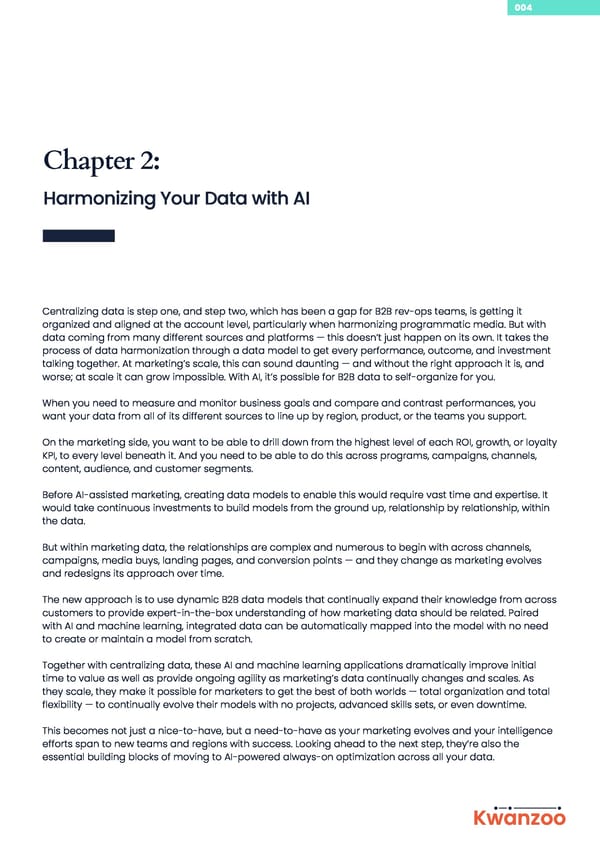004 Chapter 2: Harmonizing Your Data with AI Centralizing data is step one, and step two, which has been a gap for B2B rev-ops teams, is getting it organized and aligned at the account level, particularly when harmonizing programmatic media. But with data coming from many different sources and platforms — this doesn’t just happen on its own. It takes the process of data harmonization through a data model to get every performance, outcome, and investment talking together. At marketing’s scale, this can sound daunting — and without the right approach it is, and worse; at scale it can grow impossible. With AI, it’s possible for B2B data to self-organize for you. When you need to measure and monitor business goals and compare and contrast performances, you want your data from all of its different sources to line up by region, product, or the teams you support. On the marketing side, you want to be able to drill down from the highest level of each ROI, growth, or loyalty KPI, to every level beneath it. And you need to be able to do this across programs, campaigns, channels, content, audience, and customer segments. Before AI-assisted marketing, creating data models to enable this would require vast time and expertise. It would take continuous investments to build models from the ground up, relationship by relationship, within the data. But within marketing data, the relationships are complex and numerous to begin with across channels, campaigns, media buys, landing pages, and conversion points — and they change as marketing evolves and redesigns its approach over time. The new approach is to use dynamic B2B data models that continually expand their knowledge from across customers to provide expert-in-the-box understanding of how marketing data should be related. Paired with AI and machine learning, integrated data can be automatically mapped into the model with no need to create or maintain a model from scratch. Together with centralizing data, these AI and machine learning applications dramatically improve initial time to value as well as provide ongoing agility as marketing’s data continually changes and scales. As they scale, they make it possible for marketers to get the best of both worlds — total organization and total flexibility — to continually evolve their models with no projects, advanced skills sets, or even downtime. This becomes not just a nice-to-have, but a need-to-have as your marketing evolves and your intelligence efforts span to new teams and regions with success. Looking ahead to the next step, they’re also the essential building blocks of moving to AI-powered always-on optimization across all your data. Kwanzoo
 1. How AI is transforming marketing Page 4 Page 6
1. How AI is transforming marketing Page 4 Page 6